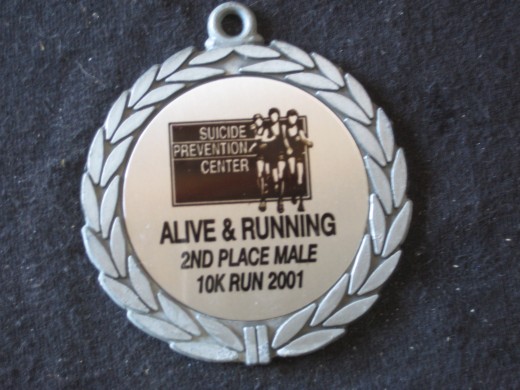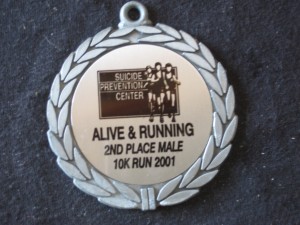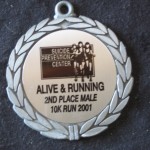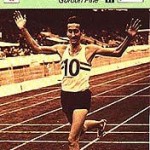Summary
The day after kicking a sandhill on the beach while running, and hearing a “POP!” in my foot, I ran the Alive and Running 10 Kilometer race in Westchester CA. I don’t know if this was a bone fractured, or a torn tendon or damaged ligament. But, I had already paid the entry fee for the race, and was at least going to go and watch my friend run.
Statistics
- 10.00 Kilometer
- 00:39:32 (official time)
- 20 Barefoot 10.00 Kilometer races from 1998 to 2001/09/30
- 137 Barefoot races (any distance) from 1998 to 2001/09/30
- Barefoot
- Overall place: 12
- Age division (age = 46) : 2
- surface (0-10): 7
- Description: asphalt
- Location: Next to LAX
- City: Westchester
- State: California
- Hurt foot the day before kicking sandhill on beach
Story
Oh sure, you’re thinking something like, “How stupid, to run a race when you’re foot might be broken.”
Ah, but you see, I have this idea that if you can run without pain (no drugs, just using appropriate running technique), then I’m not putting any aggravating stress on any existing injury. After all, that’s the purpose of pain, is to, first, prevent injury, and second, to insure that we allow injuries to heal without aggravating them.
And I wouldn’t have raced, if I couldn’t figure out how to run without aggravating my injury.
But, I was able to run without pain. In fact it only hurt when I TRIED to push off with my trailing foot (something we teach people to avoid, as it often leads to stress fractures in the foot). All the things I’ve learned over decades of running barefoot on trails (some covered with pointy gravel) and rough roads, all of the techniques I teach are the result of figuring out how to, FIRST: run barefoot without pain on most terrains, which should help us and avoid getting injured, and SECOND: how to avoid aggravating any existing injuries (which may have been caused by injurious techniques, such as trying to push off with the trailing foot) while barefoot.
Think of it like this, if your injury was, as many are, caused by poor running technique, then the same excess stresses and forces that caused the injury (usually over a long period of repetition of the stressful action) can be eliminated by figuring out how to move without causing pain to the existing injury.
If you can’t do that, then it’s time to rest and allow healing. And in most cases, we should probably rest first, and allow some healing. However, it isn’t unnatural to run occasionally while injured. Our prehistoric ancestors would no doubt have needed to, at least once-in-a-while. Otherwise we would not exist today. And so our bodies are built in such a way that it is possible to run – even if it isn’t desirable – while injured. And, running while injured can even be used as a tool to help us figure out how to move in such a way as to avoid the stresses and strains that may have caused the injury in the first place.
Of course, once our ancestors were out of danger, or found their next meal, and found a suitable place, they would have rested and allowed some time to heal and recover, at least a bit. But soon, and usually before complete healing, our prehistoric ancestors would have needed to get back up and move around a bit, or die of starvation.
But, again, it’s easy to figure out how to move differently, when moving in the same manner that injured us causes intense pain! And so, our ancestors and even modern humans, can figure out more gentle ways to run by listening to, and figuring out how to move in ways which don’t cause, pain, especially if we’re already injured!
Of course, now-a-days, in most cases, we can rest almost immediately after getting injured.
And that is exactly what I did, right after this race.
I didn’t even run another race for more than 1 week!
Gallery
- 2nd place age division – with stress fracture?



